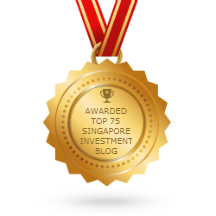Managing a portfolio of 500+ stocks - The Process
Dear all,
How do you manage a portfolio of 500+ stocks?
I think this question came out quite often during my conversation with many people out there and also comments on my blog postings. Therefore, I have decided to write this blog entry to response to some of the queries out there.
Previously as a Test Development Engineer, I was required to run more than 3000+ regression test cases for my product across various platforms. Nobody asked me how I managed to do so and I was surprised that many people felt that having 500+ stocks is one too many. Imagine running 3000+ test cases!
I had actually posted some of the commonly asked questions on my portfolio in this blog entry entitled - "Questions, Questions, Questions......" a few years ago. For those readers who might miss out the last time round, you can refer to the link below for reference:
http://ghchua.blogspot.sg/2007/02/questions-questions-questions.html
Of course, there had been a slight change in my strategy since 2007. Previously, I just diversified across a whole basket of stocks and let the market decide which are the ones that would appear as my top holdings. Since I turned full-time, I have adopted a slightly different strategy of overweighting my better ideas.
There is no secret in managing a portfolio of 500+ stocks. Just like running 3000+ test cases, you need to have a process in place. One of the most important concept to me is partitioning. Partition means breaking up your stocks into categories. Another word for this is called grouping. Basically, as an example, I partitioned my stocks into 3 major categories:
1. One group which require close monitoring
2. One group which you can monitor once in a while
3. One group which you do not need to monitor at all.
So, there you have it! Your stocks are now fall in place in one of these categories. Basically, you can ignore stocks in 3. as these are mostly ones that are insignificant in terms of weightage of your portfolio as they are "bombed out" stocks. Stocks in 2. have potential but you really do not need to look at them at all times as they are mostly in the middle part of your portfolio, whereby it is not so significant. Your core holdings in 1. which you need to look closely at, and most possibly need to add onto them every now and then.
You can of course have your own grouping methodology and you do not need to follow my example. What I want to show here in the above example is that having a process in place is more important than the number of stocks in your portfolio. Because if you have a process and you manage your portfolio based on your process as a guideline, everything will fall in place nicely and you won't get off-track easily even if you have a list of 500+ stocks.
In my previous life as a Test Development Engineer, I focused mainly on those problematic test cases that always fail on the first run. If you have a portfolio of 500+ stocks, you should focus on those that matters most to you in terms of portfolio weightage.
Labels: Strategy



7 Comments:
Agreed. Not worth the time and effort to sweat the small stuffs that have insignificant impact on us
Hi CreateWealth8888,
I guess it depends how you are going to spend your time. If you have time, you can definitely look at some of these "bombed out" stocks and see how you can fix them. Currently, I am not looking at them as their allocation in my portfolio had dropped to quite a small allocation. However, I might take a look at them in future to see which ones I need to get rid of in order to reduce the number of stocks in my portfolio.
However, my current priority is more focused on looking at my core holdings and see which ones I could overweight.
Hi gh, impressive. Blogging for sharing is good. Especially, you can rely on stock trading to cover expense and also continue to grow the portfolio, suppose the portfolio size is not small. So you can continue to have at least 5~8% return per year?
first time to know this kind of strategy, but it works for you. I keep waiting for crisis to invest, maybe I need to think again.
Hi AhJohn,
I think it really depends on individuals and only you can judge for yourself which strategy suites you. Investing is very personal and you have to discover your own strategy which you are comfortable with.
There is nothing wrong in waiting for crisis to happen to invest. It is just that I like to be invested at all times so that I could capture the market upside and also its downside as well. Therefore, I must diversify to reduce company specific risk since I am always in the market.
Hi ghchua
Everyone has their preferred investing strategies. Therefore, it is better to stick to the strategies that one is comfortable with. At the same time, one should remain open to other insights and make amendments to his/her strategies as he/she deems fit.
Ben
Hi Ben,
Well said! As investors, we shall keep an open mind to all the strategies out there but do select one that is suitable for you. And I always believe that nobody knows oneself better than yourself.
Post a Comment
<< Home